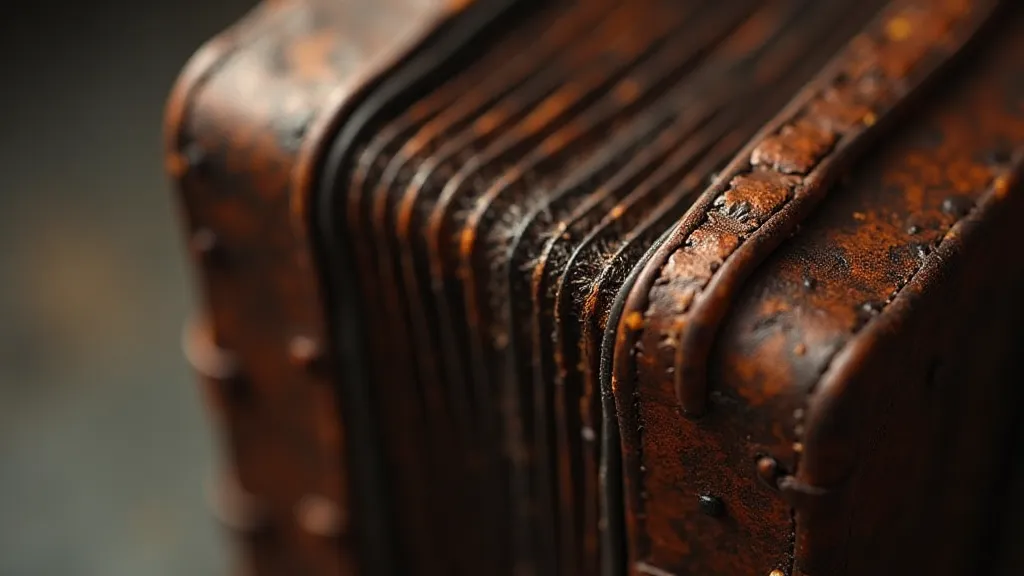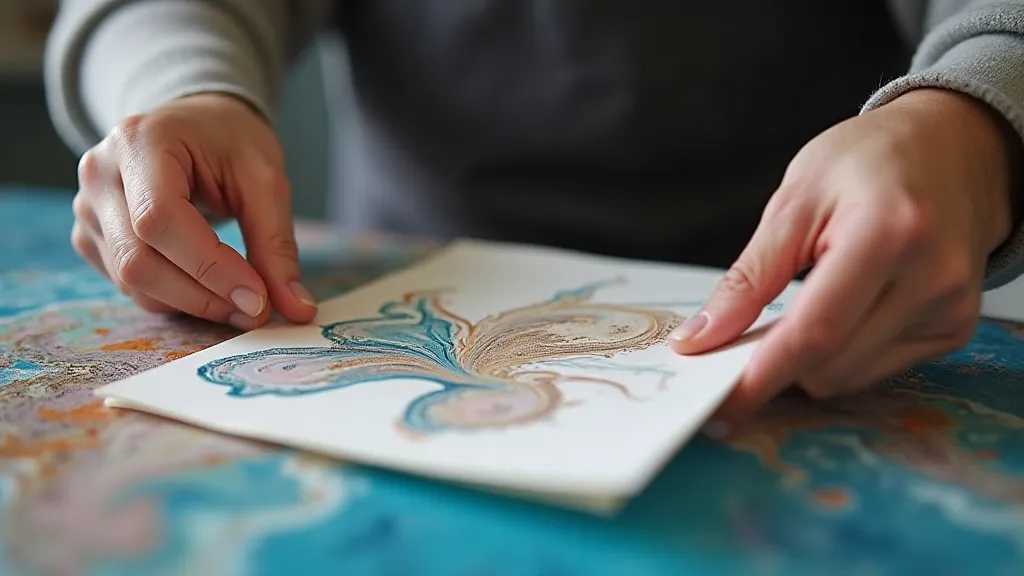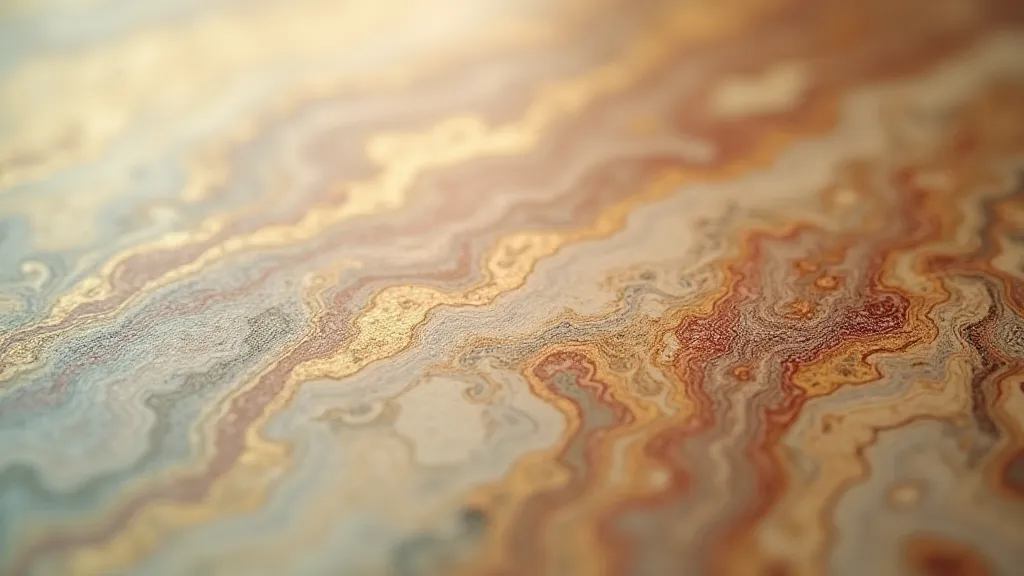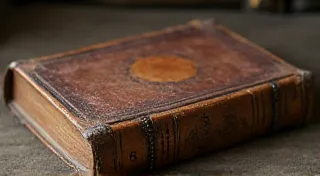The Alchemy of Impermanence: Paper Marbling and the Fleeting Nature of Ideas
There’s a particular melancholic beauty in the aged wood and bellows of an antique accordion. The ghosts of melodies linger in the keys, stories whispered through generations of players. I recently inherited one, a Hohner Monarch from the 1930s, and the process of gently cleaning and restoring it – not perfectly, but lovingly – has offered me a profound connection to the past. It’s made me acutely aware of the ephemerality of things, how moments, creations, and yes, even musical legacies, are always in flux. This same sense of transient beauty is at the heart of paper marbling, an art form that embraces the unpredictable and celebrates the fleeting nature of inspiration.
Paper marbling, at its core, is about creating patterns on paper by floating colors on a thickened surface and then transferring those patterns. It's as much about relinquishing control as it is about artistry. The patterns are never repeatable; each sheet is a unique testament to the interplay of pigment, water, and chance. While we often strive for permanence in our art – a lasting testament to our vision – paper marbling gently reminds us that true beauty often lies within the impermanent.

A History Steeped in Mystery and Global Influences
The history of paper marbling is surprisingly elusive. Unlike many art forms with clear lineage, its origins are shrouded in a delightful fog of speculation and global influences. While the exact birthplace remains debated, evidence suggests variations of the technique have existed in multiple cultures across centuries. Turkish Ebru marbling, dating back to the 16th century, is perhaps the most well-known and widely practiced form. Japanese Sumi-e ink washes, Mughal Indian designs, and even European attempts at replicating exotic textiles all contributed to the evolution of what we recognize as paper marbling today.
The Ottoman court was a significant hub for Ebru, where artisans developed intricate designs often used to decorate book edges and binding. These weren’t mere embellishments; they were considered an integral part of the artwork, reflecting the beauty and refinement of the imperial realm. The Italian technique of Carta Marmorata, developed in the 16th and 17th centuries, sought to emulate the patterns of marble, hence the name, demonstrating an early desire to capture the visual complexity found in nature.
What’s fascinating is how each culture adapted the process, incorporating their own aesthetic preferences and symbolic meanings. The Turkish Ebru masters developed highly structured designs with specific symbolism, whereas the European approach tended to be more freeform, prioritizing the visual texture and flow of the colors.
The Dance of Pigment and Water: A Technical Overview
So, how is this fleeting magic created? The process begins with a bath – not for the artist, but for the water. A carrageenan or methylcellulose base is mixed with water to create a viscous, almost gelatinous surface. This "size," as it's called, provides the foundation for the colors to float. Traditionally, natural pigments derived from plants, minerals, and even insects were used. These pigments are then carefully emulsified into a liquid medium – often a gum arabic solution – to allow them to spread evenly across the size.
The real artistry comes in the application. Artists use a variety of tools, from brushes and rags to feathers and even simple droplets, to lay the colors onto the size. The colors swirl, blend, and create unpredictable patterns – galaxies of pigment swirling in suspended animation. The beauty lies not just in the final result but in the dance itself, the constant interaction between the artist and the medium.
Once the design is deemed “complete” (though completion is a subjective term in marbling), a sheet of paper is gently laid onto the surface, carefully lifting it to transfer the pattern. The excess size is then rinsed away, leaving behind a unique and ethereal piece of art.

Embracing the Unpredictable: A Reflection on Inspiration
The fragility of the marbling process is what resonates so deeply. A slight change in temperature, humidity, or even the slightest tremor can alter the final design. There’s a constant awareness that the outcome is not entirely within your control. It's a potent metaphor for the creative process itself. Inspiration rarely arrives on command. It's a fleeting visitor, a whisper in the wind that can vanish as quickly as it appears.
Think of that initial spark of an idea, the rush of inspiration that floods your mind. It's often a fragile thing, easily lost if you try to grasp it too tightly. Trying to force an idea into a rigid framework can stifle its essence. Paper marbling, in a way, is an exercise in letting go, in accepting the unexpected turns that creativity often takes. The most beautiful marbling designs are often those born from happy accidents, from embracing the imperfections and the surprises that arise.
The process parallels the restoration of my antique accordion. I can painstakingly clean and repair the keys, but I can’t erase the wear and tear, the marks of time and use. Instead, I celebrate them, recognizing that they tell a story, adding character and depth to the instrument. Similarly, in paper marbling, the unpredictable patterns are not flaws but unique fingerprints of the creative moment.
Collecting and Restoration: Appreciating the Legacy
Paper marbling, like any art form, has a growing community of collectors and enthusiasts. Vintage marbled papers are particularly prized for their historical significance and the glimpse they offer into past techniques and aesthetics. Identifying genuine antique marbled papers can be challenging, but careful examination of the paper itself, the pigments used, and the style of the design can provide clues. The quality of the paper itself – the watermark, the texture – can also be indicative of its age and origin.
If you’re interested in restoration, be mindful of the delicate nature of these pieces. Cleaning should be minimal, and any repairs should be undertaken with the utmost care, respecting the original character of the paper. The goal isn’t to make it look new but to preserve its integrity and tell its story.

Paper marbling is more than just a technique; it's a philosophy. It's an invitation to embrace the ephemeral, to find beauty in imperfection, and to celebrate the magic of chance. It’s a reminder that the most profound art often arises from the willingness to surrender to the unpredictable dance of creation.





